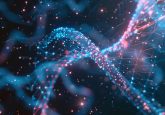Biomarker test could decrease time for autism to be diagnosed in children

Researchers from the UC Davis MIND Institute and NeuroPointDX (CA, USA) have discovered a group of blood metabolites they believe have the potential to detect a child with autism spectrum disorder (ASD). Their results, recently published in Biological Psychiatry, are part of the Children’s Autism Metabolome Project (CAMP) – the largest metabolomics ASD study to date.
Currently, there is no biomarker test available for ASD. Instead, children are diagnosed based on altered behavior they display between the ages of 2–4 years old. As a result, parents can wait for as long a year for their child to receive a diagnosis. To combat this, CAMP researchers are focusing their research on the role of the metabolome in ASD and whether this can be used to improve the time it takes for child to be diagnosed. They believe this holds the key as it monitors both genetic and environmental contributions to the development of the disease.
As part of their recent work, the CAMP team compared blood metabolites from 516 children with ASD with 164 children displaying typical development. They discovered 17% of the children with ASD had unique concentrations of specific amino acids in their blood. They hope this could develop into a blood test for the disease, helping to reduce the time taken for diagnosis.
Senior author, David G Amaral (founding director of research at the MIND Institute and senior author on the paper) explained: “With this panel of alterations in amino acid metabolism, we can detect about 17% of kids with ASD. This is the first of hopefully many panels that will identify other subsets of kids with autism.”
Although 17% of the ASD group may be a small percentage, as ASD encompasses a complex array of symptoms it is considered a significant finding by the researchers. As ASD covers a complex array of symptoms, the researchers hope to continue developing metabolomic assays that cover all variations of the disease.
Amaral continued: “The long-term vision is, once we’ve been able to analyze all the data from CAMP, we would have a series of panels. Each of these would be able to detect a subset of kids with autism. Ultimately, metabolomics may be able to identify most children with autism.”
The CAMP researchers will continue to validate their results while developing their research to investigate other metabotypes.
“I’m optimistic this is not a one-off. There are going to be other panels that can detect other groups of kids with ASD,” concluded Amaral.
Sources: Smith AM, King JJ, West PR et al. Amino acid dysregulation metabotypes: potential biomarkers for diagnosis and individualized treatment for subtypes of autism spectrum disorder. Bio. Psychiatry doi: doi.org/10.1016/j.biopsych.2018.08.016 (2018) (Epub ahead of print); www.sciencedaily.com/releases/2018/09/180906082016.htm





